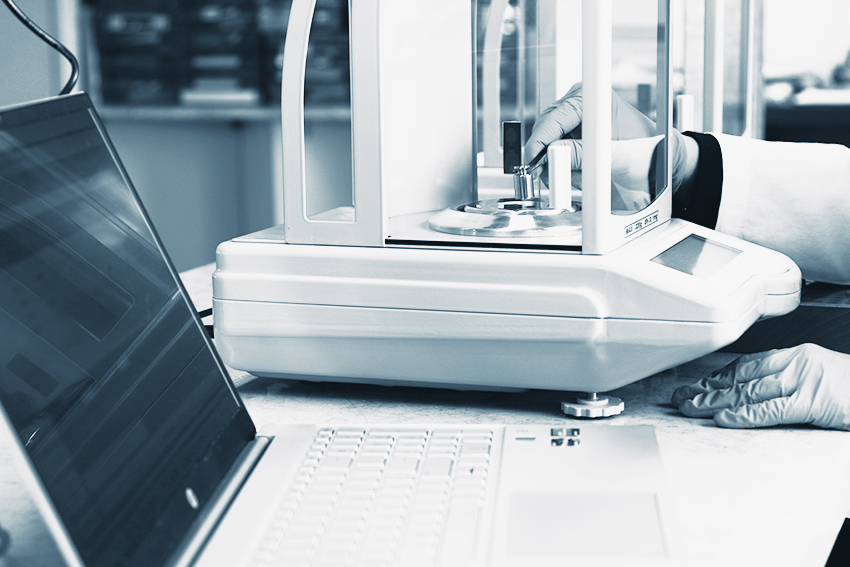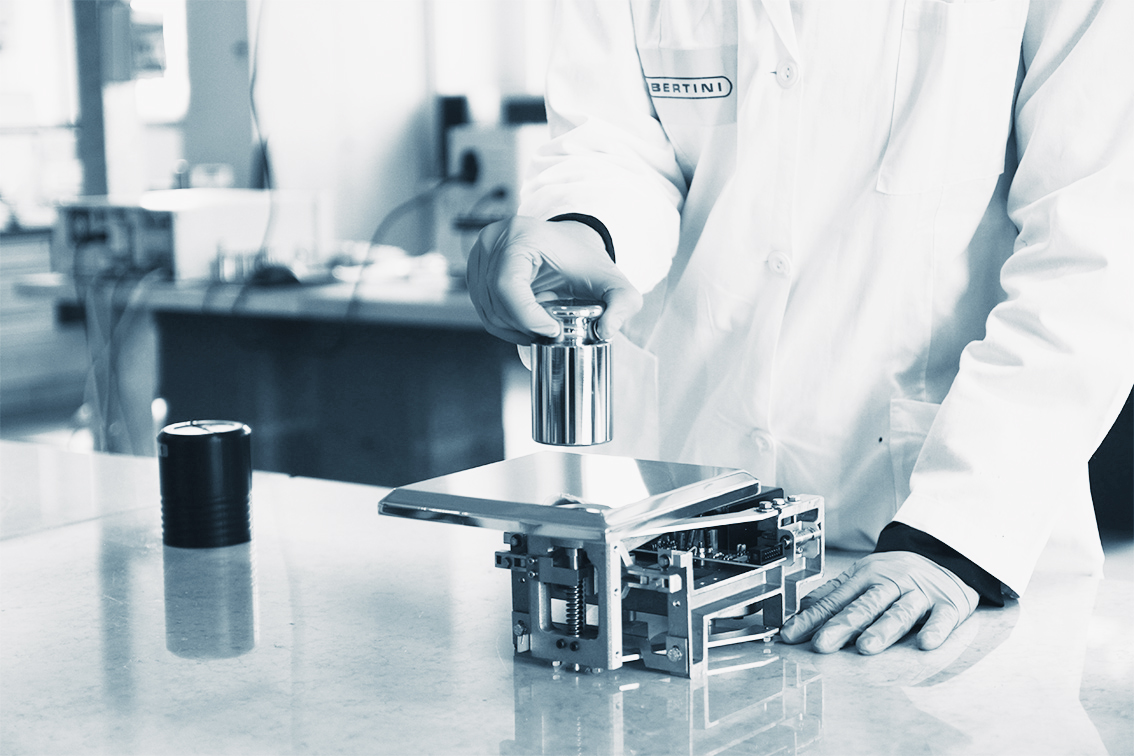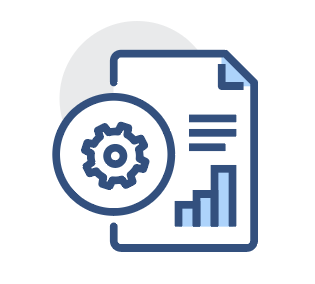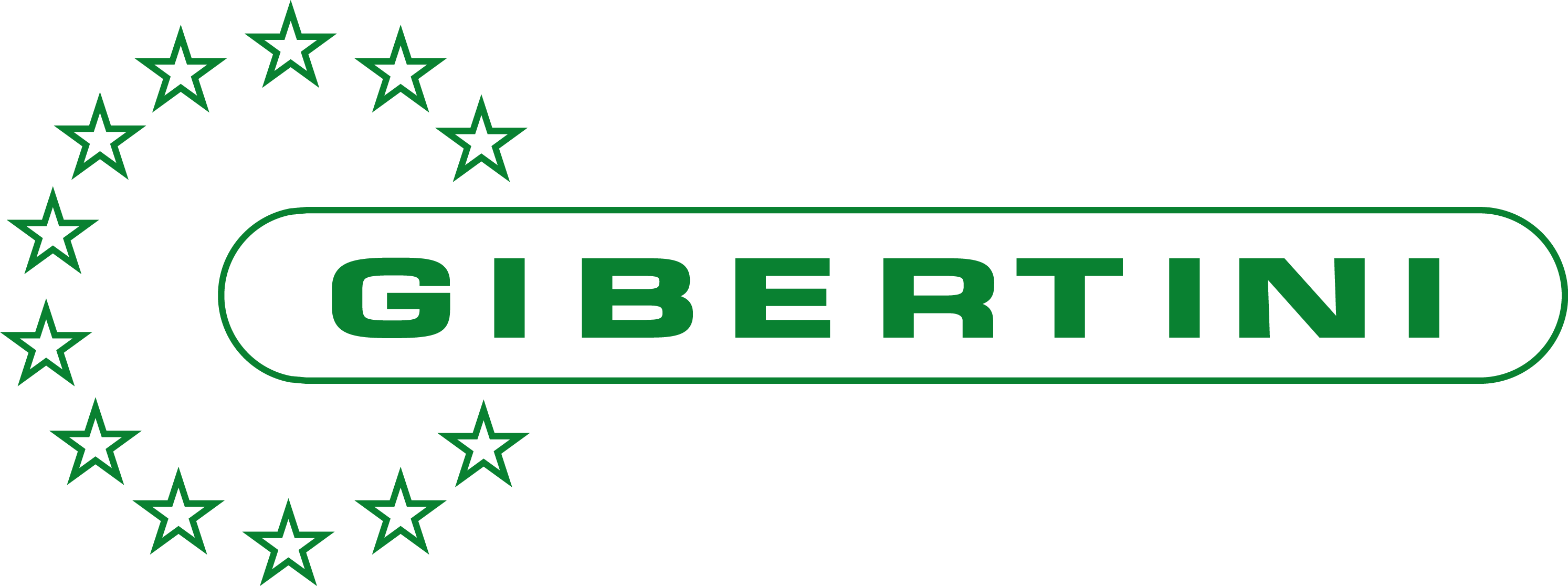Calibration is a demonstration that the instrument reproduces results within specific tolerances by comparisons with reference standards (certified sample weights) and traceable over an appropriate measurement range.
Calibration must be performed periodically, with intervals defined by the user, in order to identify any "drift" of the device and improve its accuracy.
Are you 100% sure that your calibration service partner, provides accurate calibrations?
Generally required for instrumentation for specific measurements, normal production, company testing. In Calibration reports (RT) the traceability of measurements to national standards is documented.
The ISO calibration activity is an integral part of our certified technical assistance service. And thanks to the constant control of our reference instruments and the continuous updating of the technical staff, we have always provided an efficient and accurate calibration and quality service.
Our strengths
The technical assistance service provides ISO calibration for all NAWI scales up to 150kg laboratory and industrial


The calibrations performed
For over 50 years Gibertini has been manufacturing and testing weighing instruments by adopting excellence in quality as the primary objective of its company policy. We carry out calibration reports on:
ISO calibration service: what it is and how it is done
The ISO calibration service is suitable for companies with a certified quality management system, which is essential for internal controls on the instrumentation used for measurements.
The Gibertini calibration procedure is divided into two categories:
On site: A series of operations that are carried out on-site, within the laboratory or factory, by expert technicians with certified equipment and samples. It is a type of calibration that is cheaper and more practical as it does not require the instrument to be shipped.
In the laboratory: A metrological laboratory allows you to check the instrumentation within a dedicated environment with state-of-the-art equipment. Generally performed following Repair, it is a service dedicated to checking the performance and guaranteeing the instrument's high quality standards.

ISO calibration report: Scales
Each calibration, performed by qualified technicians, is followed by a "Calibration Report" in which the results obtained are certified and complete with references to the samples used (metrological traceability) and includes:
| Standard | Gold | |
|---|---|---|
| Visual and functional check: instrument integrity | ||
| Tests of Zero | ||
| Linearity | ||
| Eccentricity | ||
| Repeatability (50%) | ||
| Repeatability (5%) for minimum weight ( Ph-Eur 2.1.7 ) | ||
| Accuracy : Sensitivity ( Ph-Eur 2.1.7 ) | ||
| As Found, As Left certificates | ||
| Mass calibration certificates |
Ph.Eur 2.1.7 - USP41
Find out how to be compliant with the new PharmacopoeiaWhat is As Found, As Left?
Gibertini calibration procedure can be divided into two categories upon request "as found" e "as left"
As found : This type of document is issued when an instrument is calibrated, and certifies the operation of the device without carrying out any type of adjustment or repair. The "as found" report simply states how the tool was found , and must be released whether it is out of specification or working perfectly. Archiving these calibration reports makes it possible to verify the linearity and long-term stability of the measuring instrument.
As Left : This document demonstrates that an activity has been performed on the instrument and that it has been brought back to proper operating conditions. This type of document follows, in chronological order, the "as found" document, which can certify that the instrument has been found out of specification. Since the adjustment data provided by the "as left" document is acquired after any repairs or adjustments made to the device . This document refers to the condition in which the device was left to be returned to the user or put back into operation.
These two documents, "as found" and "as left" , are essential for documenting how the device was found and how it was left after making adjustments. The primary purpose behind this documentation is to facilitate accurate calculation of instrument drift over time, and to ensure that instrument accuracy is maintained throughout its useful life. Excessive deviation from the reference standard indicates a serious problem for your production process.
Keep the "as found" and "as left" documents in an archive that is always accessible and easy to consult to guarantee the quality assurance program. For any audits necessary to obtain the certifications or simply for all maintenance activities that aim to optimize the production process.
Quality Certification: Compliance with quality standards and regulations
For your production process Quality System (E.g. ISO 9001, ISO 17025, ISO 17034, ISO 22000, GFSI, BRC, IFS, IATF 16949 etc.) that involves the use of measuring instruments, calibration is a fundamental requirement to guarantee the quantity, quality and safety of the product.
“(7.1.5.1.) When monitoring or measurement is used to verify compliance of products and services with requirements .. "" .. The organization must ensure that the resources made available:
a) are suitable for the specific type of monitoring and measurement activity to be undertaken;
b) are maintained in order to ensure their continued suitability for the purpose. "
In addition, "... the organization must retain appropriate documented information as evidence of the fitness for purpose of the resources for monitoring and measurement."
In fact, in the next point (7.1.5.2) "Traceability of measurements" specifies that:
"… When the traceability of measurements is a requirement or is considered by the organization as an essential component to provide confidence in the validity of the measurement results, the measurement equipment must be:
a) calibrated and / or verified at specified intervals or before use, against measurement standards referable to samples international or national reference; if such samples do not exist, the basis used for calibration or verification must be kept as documented information;
b) identified to determine the status;
c) safeguarded from adjustments, damage or deterioration that could invalidate their calibration status and consequent measurement results.
When a measuring equipment is found unsuitable for its intended use, the organization must determine whether validity of previous measurement results has been adversely affected and take appropriate action as necessary. ".
In the pharmaceutical, food & beverage, Power & Energy and analysis laboratories, instrument calibration is an integral part of quality control (CQI) whose purpose is to monitor the error in order to know it and contain it as much as possible. Quality control is a qualifying element for laboratories. In the industrial field, instrument calibration allows compliance with regulations and optimizes the production process.
With a periodic calibration of the instruments, it is possible to accurately monitor the production process and act if the results do not fall within tolerances, an essential factor for limiting waste and maximizing the yield of the production process.

Does the calibration certificate have an expiration date?
NO. Calibration certificates show only the date of issue and not the expiration date. The user decides on the basis of various parameters (following the provisions of his own quality system) when to proceed and redo the calibration.
How often should a balance be calibrated?
Times change according to the type of instrument, the use made of it, the reference laws, the method of use and the internal protocol of each company. There are consolidated practices (GLP) and regulations that require annual calibration, but this must always be assessed on the basis of the risks that the instrument may suffer over time, due to the type and method of use and environmental conditions.
The evaluation on the frequency of the calibration is subjective and depends on internal protocols.
Should control actions be carried out between one calibration and another?
It is very useful to define procedures for checking and maintaining the scales, between one calibration and another. These checks can be carried out by the users themselves, with the precise purpose of anticipating any problems and drifts, non-conformities, out of tolerances and consequently intervening in advance with adjustment and calibration actions.
Do you have the right tools to carry out intermediate quality checks?
What if the instrument is out of specification?
A calibration service without adjustment simply shows the conformity or non-conformity of the instrument, but when the adjustment is made, a second calibration must be performed to verify that the instrument is within the tolerance limits.
In this case, the customer receives two calibration reports: as-found and as-left, before and after the adjustment, reflecting the fact that the instrument is now working correctly.
